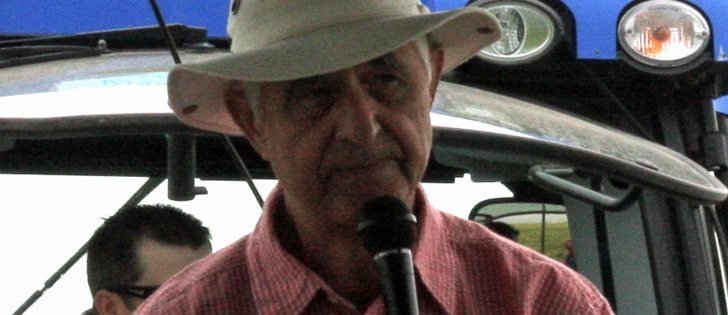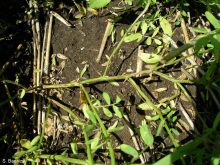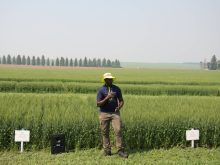WIth the development of new varieties, western Canadian producers can push their wheat yields even further.
Give researchers some time — and some money — and the crop’s agronomic performance will continue to improve, said Ron DePauw, senior principal wheat breeder with Agriculture Canada.
“The opportunities that exist to make better varieties are very large,” he said. “To me it’s more exciting now then when I graduated from university.”
During a stop on a recent field tour of the Indian Head research farm, he reflected on how wheat production has evolved since he was a graduate student in the mid 1960s. At the time, global production was under 400 million tonnes, he said, with a “theoretical maximum yield” of 15 tonnes per hectare, or six tonnes per acre.
Read Also

Canadian Food Inspection Agency extends chronic wasting disease control program consultation deadline
Date extended for consultation period of changes to CWD program
Modern production outpaces those numbers with less land devoted to the crop.
“Farmers are growing it, 15 tonnes per hectare, in some countries. So the theoretical maximum now, they’re saying, is up around 20 tonnes per hectare,” he said. “So I wonder, do we really know where the theoretical maximum is?”
Stationed at the Semiarid Prairie Agricultural Research Centre in Swift Current, DePauw oversees the development of new wheat varieties and registration trials at sites like Indian Head across the Prairie provinces, where researchers are working to improve the yield, maturity, height and straw strength in new varieties that are on the way to registration.
DePauw has contributed to the registration of a few dozen new varieties — 47 wheat cultivars and six triticale — and several wheat classes, with as much as half of the Canadian-grown crop coming from these projects.
Cultivars like Lillian and AC Barrie, which is noted for shifting the negative relationship between higher yields and protein content, came from his team.
Along the way he picked up a few accolades, including the Saskatchewan Order of Merit, the Order of Canada and, earlier this year, an honorary doctorate from the University of Saskatchewan.
Newer products — and others that remain in the pipeline —are making headway and showing improved water- and nitrogen-use efficiency, he said.
But these developments and genetic gains happen slowly. It can take 15-plus years before a new variety arrives in commercial fields — the result of the complexity of development, a lengthy registration process and a shortfall of research dollars.
“When you look at, let’s say canola, they’re investing between $60 and $65 million per year. In wheat, there’s maybe $15 to $20 million,” he said. “That’s quite a difference in the resource investment.”
The numbers echo those delivered at a wheat summit in Saskatoon earlier this year, where Saskatchewan premier Brad Wall announced new funding for wheat research of $10 million over five years.
But experts at that event said that still leaves Canada well behind countries like Australia, which is investing some $80 million into wheat development.
“We could’ve been there sooner (to 15 tonnes per hectare), but there wasn’t the need,” said DePauw of the wheat markets over successive decades that saw surplus grains and fewer development dollars.
Today, with a rapidly expanding worldwide population, there are renewed calls for investment in wheat development to address a foreseen food crisis.
“As if this was something brand new. No, it was precipitated by people,” said DePauw. “By the policies that were put in place.”















